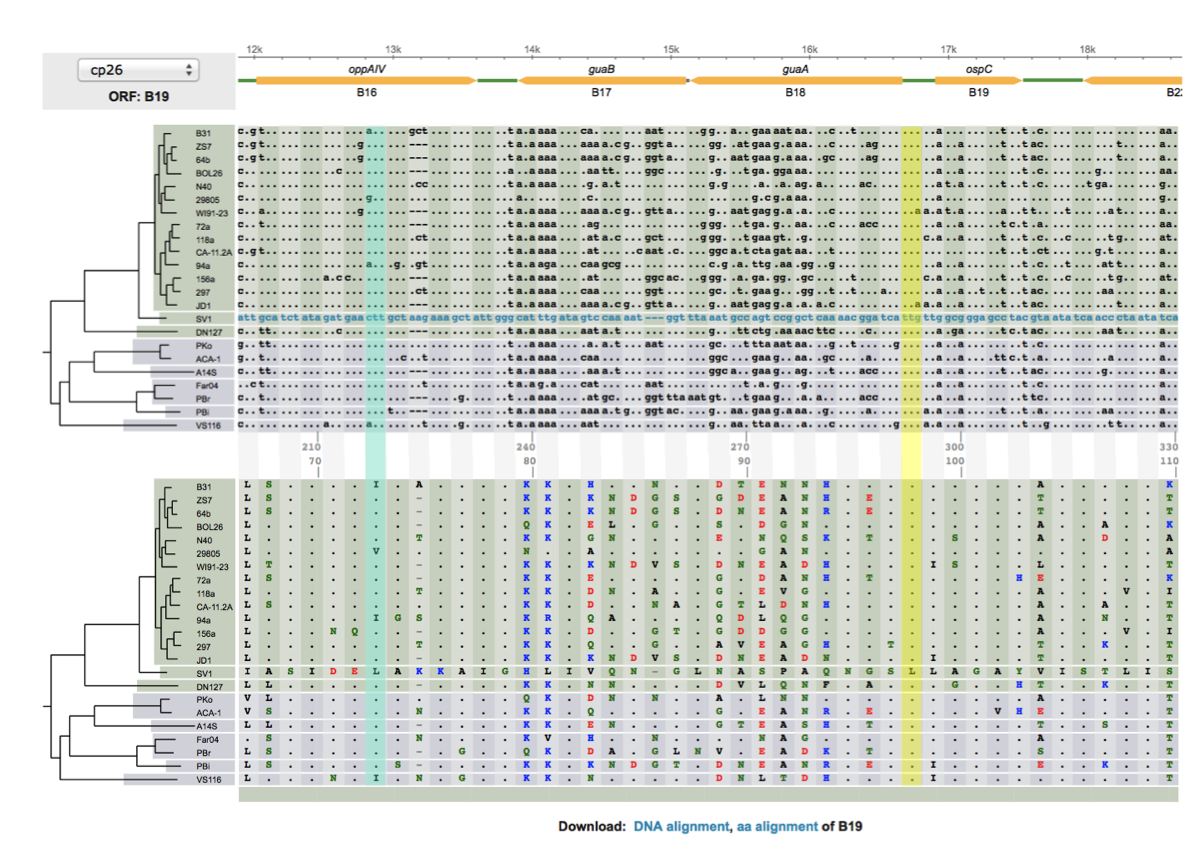Biol375 2016
Course Description
Molecular evolution is the study of the change of DNA and protein sequences through time. Theories and techniques of molecular evolution are widely used in species classification, biodiversity studies, comparative genomics, and molecular epidemiology. Contents of the course include:
- Population genetics, which is a theoretical framework for understanding mechanisms of sequence evolution through mutation, recombination, gene duplication, genetic drift, and natural selection.
- Molecular systematics, which introduces statistical models of sequence evolution and methods for reconstructing species phylogeny.
- Bioinformatics, which provides hands-on training on data acquisition and the use of software tools for phylogenetic analyses.
This 3-credit course is designed for upper-level biology-major undergraduates. Hunter pre-requisites are BIOL203, and MATH150 or STAT113.
Please note that starting from fall 2015, completing this course no longer counts towards research credits for biology majors.
Textbooks
- (Required) Roderic M. Page and Edward C. Holmes,1998, Molecular Evolution: A phylogenetic Approach, Blackwell Science Ltd.
- (Recommended) Baum & Smith, 2013. Tree Thinking: an Introduction to Phylogenetic Biology, Roberts & Company Publishers, Inc.
Learning Goals
- Be able to describe evolutionary relationships using phylogenetic trees
- Be able to use web-based as well as stand-alone software to infer phylogenetic trees
- Understand mechanisms of DNA sequence evolution
- Understand algorithms for building phylogenetic trees
Links for phylogenetic tools
- NCBI sequence databases
- R Tools
- R source: download & install from a mirror site
- R Studio: download & install
- APE package
- A Molecular Phylogeny Web Server
- EvolView: an online tree viewer
Exams & Grading
- Attendance (or a note in case of absence) is required. Bonus for active participation in classroom discussions.
- Assignments. All assignments should be handed in as hard copies only. Email submission will not be accepted. Late submissions will receive 10% deduction (of the total grade) per day.
- Three Mid-term Exams (30 pts each)
- Comprehensive Final Exam (50 pts)
Academic Honesty
While students may work in groups and help each other for assignments, duplicated answers in assignments will be flagged and investigated as possible acts of academic dishonesty. To avoid being investigated as such, do NOT copy anyone else's work, or let others copy your work. At the least, rephrase using your own words. Note that the same rule applies regarding the use of textbook and online resources: copied sentences are not acceptable and will be considered plagiarism.
Hunter College regards acts of academic dishonesty (e.g., plagiarism, cheating on examinations, obtaining unfair advantage, and falsification of records and official documents) as serious offenses against the values of intellectual honesty. The College is committed to enforcing the CUNY Policy on Academic Integrity and will pursue cases of academic dishonesty according to the Hunter College Academic Integrity Procedures.
Course Schedule
Part 1. Tree Thinking
- 8/25 (TH). Overview & Introduction. Lecture slides:
| Assignment 1 (10 pts; Due: 8/29, Monday) |
|---|
| Pre-test: Full credits will be given as long as each question is answered with some reasoning. In other words, it will NOT be graded on being right or wrong. It's an assessment tool, to be compared with later test outcomes to show teaching/learning results. |
- 8/29 (M). 1.1. Introduction (Continued). In-class exercise 1. Tutorial: R & R-Studio (Bring your own computer)
- 9/1 (TH). 2.1. Intro to trees
| Assignment 2 (10 pts; Due: 9/8, Thursday) |
|---|
Watch Origin of Species: Lizards in an Evolutionary Tree. Provide short answer (1-3 sentences) to each of the following three questions.
|
R exercises
|
- 9/5 (M). Labor Day. No class
- 9/8 (TH). 2.2 & 2.3. Tree Distance. In-class exercise 2.
| Assignment 3 (10 pts; Due: 9/15, Th) |
|---|
R exercises
|
- 9/12 (M). 2.4 & 2.5. Species Tree & Lineage Sorting
- 9/15 (TH). 2.5. Consensus Tree & Review. Chapter 2 Slides:. In-class Exercise 3:
- 9/19 (M). 4:10 - 5:10pm Midterm Exam I Bring pencils, erasers, and a calculator
